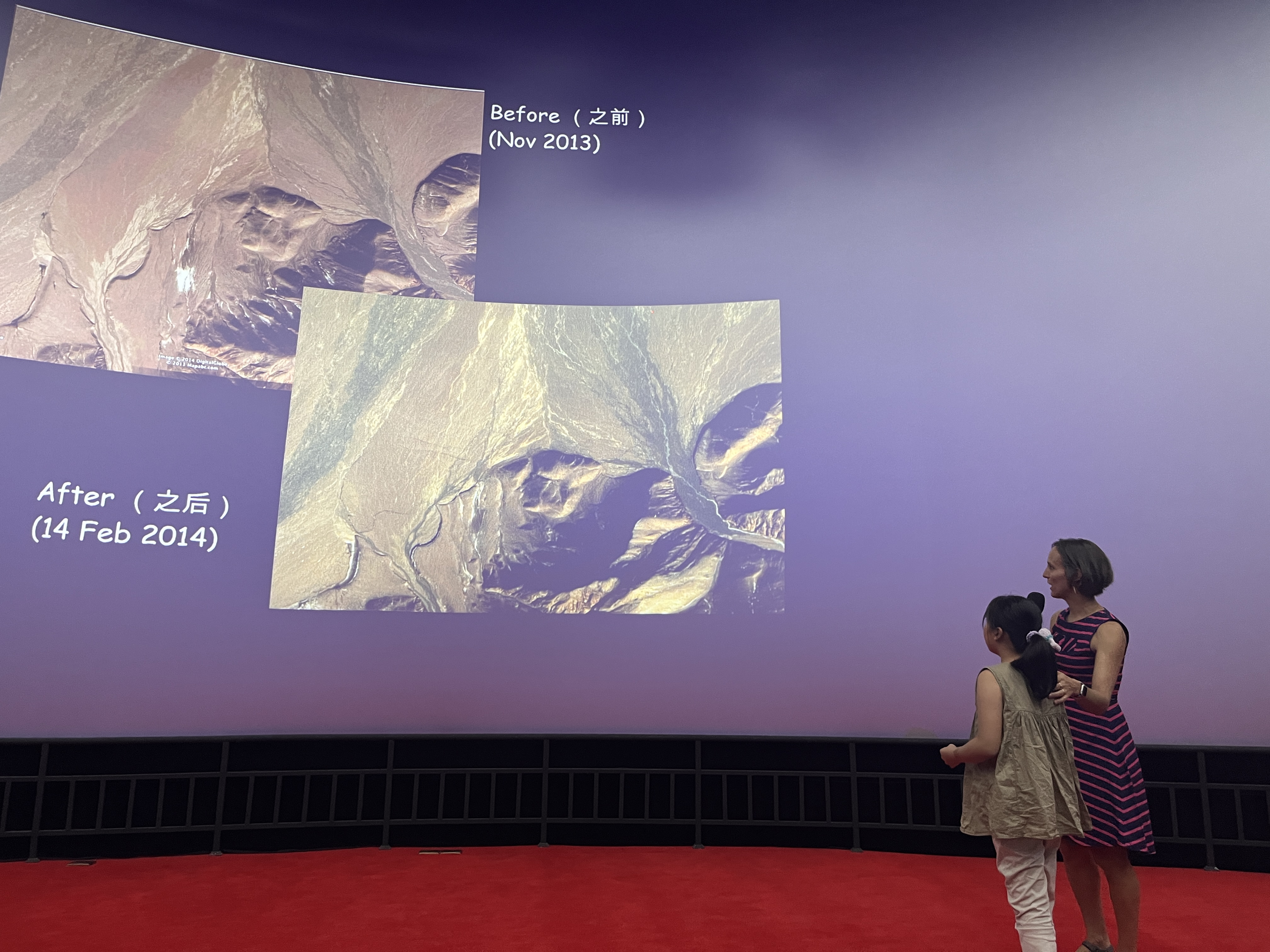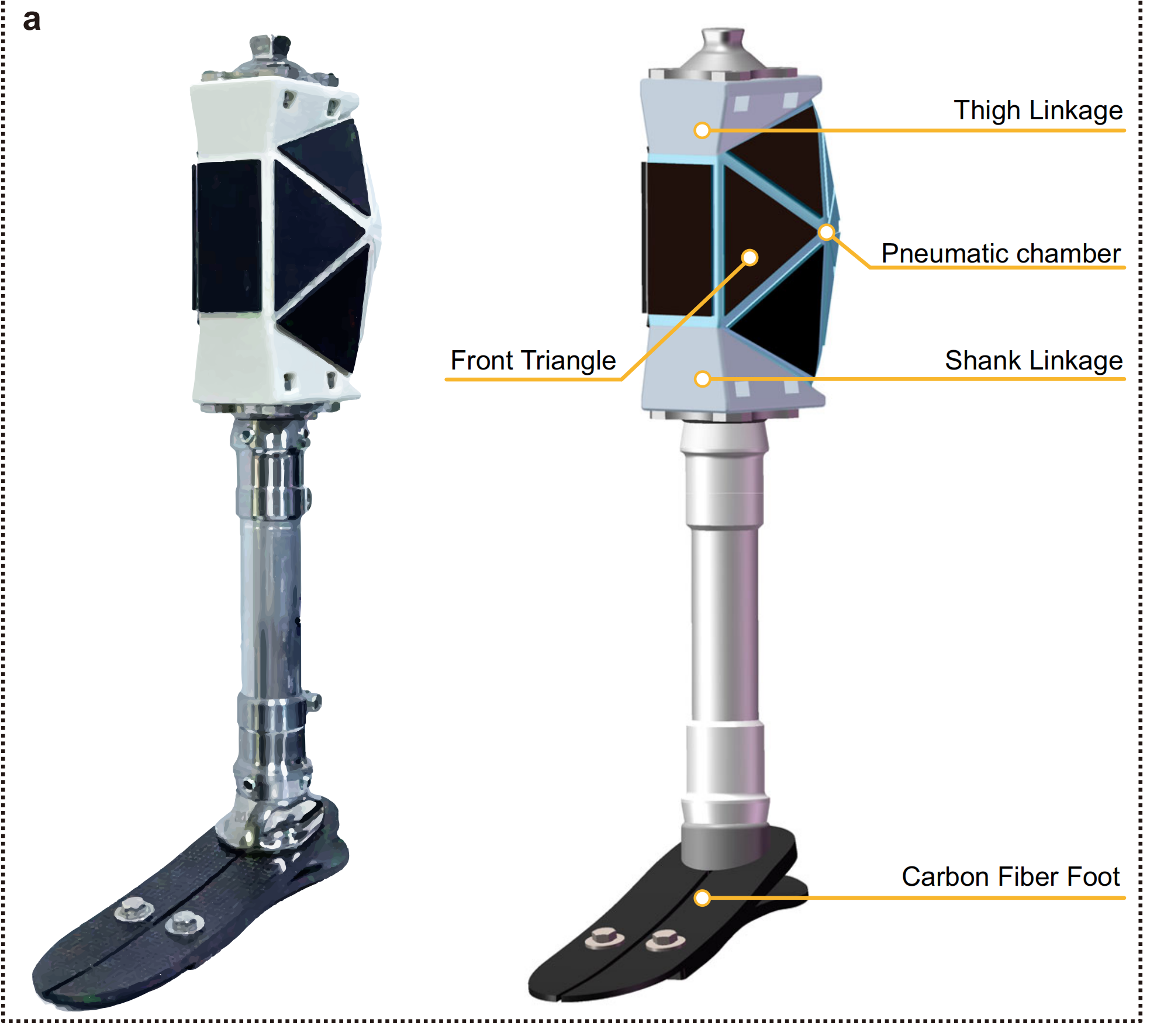Unveiling Earthquake Mysteries
By LONG Yun & BI Weizi

Chevalier invites a student to answer questions about earthquakes. (PHOTO: S&T Daily)
In today's world, the word earthquake has become increasingly common in conversations and news headlines. With extensive experience in earthquake prone regions, French/Belgian geoscientist Marie Luce Chevalier from the Institute of Geology under the Chinese Academy of Geological Sciences, offers profound insights into the fascinating world of earthquakes in a recent interview with Science and Technology Daily.
The Dance of Earth's Tectonic Plates
According to Chevalier, Earth is like a colossal jigsaw puzzle covered by tectonic plates. There are seven major plates and roughly twenty minor ones. China is perched upon the Eurasian plate, the third-largest after the Pacific and North American plates. These blocks on the earth's surface are in constant motion, like pieces of a puzzle that can freely slide, converge, or collide. This dynamic movement leads to the formation of awe-inspiring landscapes, including mountains and rifts, as well as the creation of geological phenomena like earthquakes.
Earth's Emotional Release: Earthquakes
"Earth, much like us humans, has its way of expressing stress and energy," said Chevalier, adding that the earth releases its "emotion" through motion. Astonishingly, around 80 percent of the world's earthquakes occur along the margins of the Pacific Plate. This region is known as the "Ring of Fire" due to the numerous active volcanoes lining its boundaries. However, earthquakes can also originate within a tectonic plate, as exemplified by the Tibetan Plateau, where the collision between the Indian and Asian plates unfolded around 55 million years ago.
The Puzzle of Earthquake Patterns
Is there a discernible pattern or cycle to earthquake frequency? According to Chevalier, there isn't a straightforward pattern governing earthquake occurrences globally. However, along specific fault lines, such as the San Andreas fault in California, U.S., earthquakes tend to recur at somewhat regular intervals of approximately 150 years.
From Chevalier’s perspective, predicting earthquakes remains elusive. The science of earthquake prediction is far from exact, and the precise timing and location of the next earthquake remain uncertain.
Still, science provides us with hope. Today, scientists can estimate their frequency, magnitude, and surface rupture length through research or fieldwork. "People can hope that one day, in the not-so-far future, humans will be able to predict earthquakes to save lives and limit infrastructure damages," said Chevalier.
The Complex Interplay Between Earthquakes and Weather
In addition, Chevalier highlights the relationship between earthquakes and the weather, spanning both short-term and long-term effects.
In the long run, over geological timescales, repeated earthquakes can modify regional topography, giving rise to mountain ranges or rift valleys. Such changes can disrupt climatic patterns, affecting weather systems like monsoons and westerlies. Also, landslides triggered by earthquakes can further alter river courses, sometimes leading to catastrophic floods downstream.
As to the short-term effect, the sudden release of underground energy raises surface temperatures during an earthquake. This, in turn, causes surface water to evaporate, increasing atmospheric water vapor and potentially facilitating rainfall. Additionally, earthquake-induced shockwaves can send sand and dust particles into the air, which attract water vapor, leading to precipitation.







